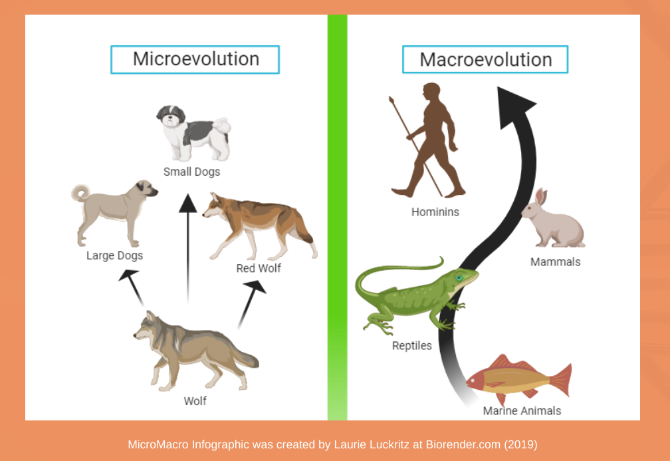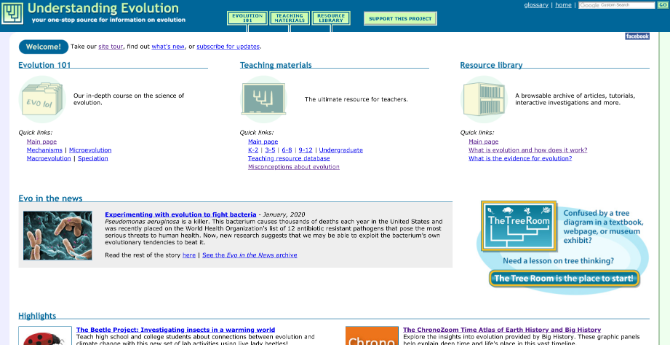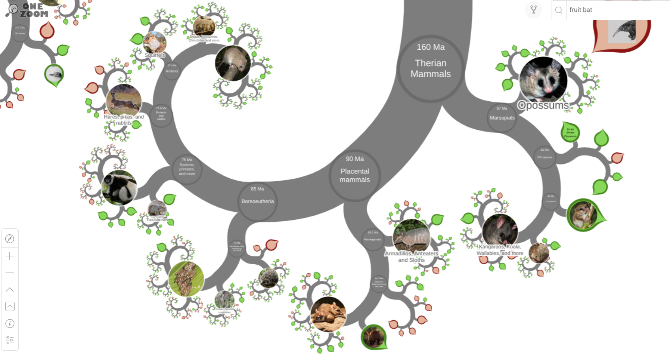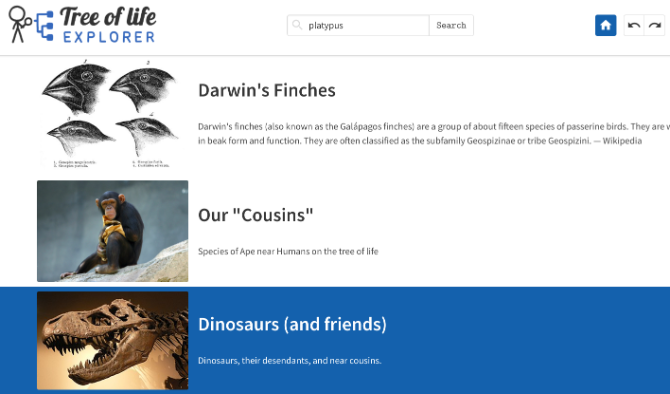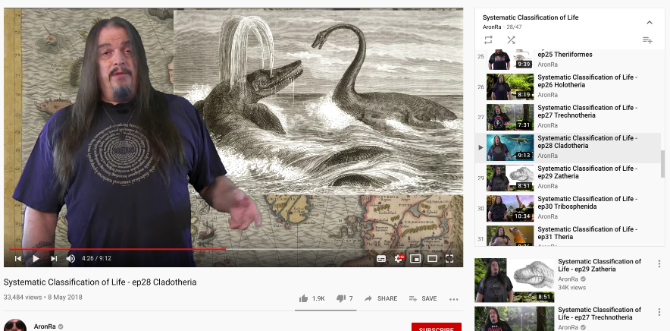Evolution is fascinating, often misunderstood, and sometimes controversial. These websites make it easier for non-scientific folks to understand and visualize evolution.
When we think about evolution, we mostly focus on the basics: man evolved from primates, life evolved from other life, and so on. While that's apt, there is so much more to it. Evolution is an interesting branch of science with a million stories waiting to be explored. Plus there's always the debate about evolution and creationism. Heck, even Google gives answers from creationism sometimes.
February 12 is Darwin Day. A day to commemorate the birth of Charles Darwin, the proponent of the theory of evolution. What better reason to refresh your understanding of evolution, and perhaps learn something new?
1. Everything Evolution (Web): Evolution Without Jargon
They say the best way to truly understand a subject matter is to teach it to someone else. So biology student Laurie Luckritz created a blog to explain evolution to regular people, without using jargon as much as possible.
Everything Evolution has only 10 blog posts, but in these, Luckritz covers the basics of evolution masterfully.
For example, the first post covers the origins of the theory and the difference between macroevolution and microevolution. I won't lie, I had forgotten about these terms, but Luckrtiz's simple explanation is all one needs to process the concept.
Through the posts (illustrated with helpful images and infographics), you'll understand how evolution works, some of the jargon words like taxonomy and phylogeny, and even clarify the basics of the evolution of human beings.
If you want to avoid being overwhelmed with reading matter, Everything Evolution is a great blog to start with.
2. Evolution 101 (Web): Berkeley's Guide to Understanding Evolution
Whether you're a student or a teacher, you must visit the University of California, Berkeley's mini-site on evolution. It is a comprehensive source to understand everything about the theory, get some teaching materials to explain it to others and use interactive elements.
Start at Evolution 101, an in-depth course that gives a simple introduction to the concept of evolution, aided with helpful graphics.
All the graphics are free to download, making it a great resource for teachers who want to explain it to their students. Berkeley also teaches you how to read "tree of life" phylogeny, which you'll encounter often in reading about evolution.
Once you're done with the course, browse the website for interesting insights into evolution, scientific investigations, news, and other resources. I would particularly recommend the Misconceptions About Evolution page.
While primarily aimed as a teaching tool, it breaks every common myth and misunderstanding about evolution, without getting too scientific. Of course, if you want the hard science for more information, it's always a click away.
3. OneZoom (Web): Interactive Tree of Life Explorer
At OneZoom, you can zoom, scroll, pan, and browse an interactive Tree of Life representation like Google Maps. It plots relationships between 2,235,362 species of life on the planet. Each species is a leaf and each branch is how they connect.
It's not exactly a tree in the physical sense. Instead you see a long spiral, which branches out into different species at different points. There's a handy search bar to quickly dive to any species. At each branch, you will find information about when the species came into being or went extinct, as well as other tidbits like its current conservation status and some trivia.
It's fascinating to click around and find so much more to zoom into. The connections between different living creatures on our planet aren't as obvious as you might think. For instance, did you know rodents are more closely linked to rabbits than anything else?
You can also sponsor each leaf or species to keep the website going. So the next time someone checks out a German Shepherd dog or a deadly venomous Cobra, they might see your name.
4. MinuteLabs Tree Of Life (Web): Recommended Trees and Customizable Maps
MinuteLabs, made by the people behind popular YouTube channel MinutePhysics, created its own Tree Of Life. This simple node-based tree is a lot cleaner than other online charts. And you can control what you see.
Each node represents any taxonomic rank (species, family, genus) with the common name and the Latin scientific name. You can customize the tree you're seeing by expanding, collapsing, or removing entire branches. For example, if you're interested in canines but not jackals, snip it off.
Search for any species and it'll immediately pop up on the tree you're already seeing, showing how long the connection is. It's a neat way to make a custom tree for you to see how one animal connects to another.
MinuteLabs has also made a list of "curated trees" worth checking out. How do dinosaurs connect to us and which of their descendants are still around? Who survived from the prehistoric age to now? And what are all these peculiar-looking animals?
5. Systematic Classification of Life (YouTube): Video Series to Explain Evolution
The Phylogeny Explorer Project is yet another "tree of life" encyclopedia, telling you how every living creature is connected. But no, you're not here to dive into another one of those. Instead, focus on the YouTube channel of Phylogeny Explorer creator AronRa.
In a series of videos (handily compiled in a playlist), AronRa explains the "Systematic Classification of Life" in the simplest way possible. The videos have him standing in front of a green screen that changes images according to what he's talking about. AronRa speaks in simple language and not like a scientist, breaking down the basics of each node of the tree.
The style of teaching is wonderful, as it gives you a larger worldview of our earth and how different environmental factors affected evolution. The changing of the land masses, for instance, had major impacts. Plus, AronRa also talks about how humans have studied these to come to our current conclusions.
Each episode is roughly 10 minutes, although a few clock above 15 minutes. There are currently 47 episodes, and the series is still ongoing. If you want shorter videos, check out the Stated Clearly channel for an explanation of the basics of evolution and natural selection.
Visualize the Progress of Mankind
The first part of evolution is to visualize everything from the birth of the first living creature to the human beings of today. But the evolution of humans and our impact on the world is fascinating in itself. Check out these websites to visualize the progress of mankind and the earth.


